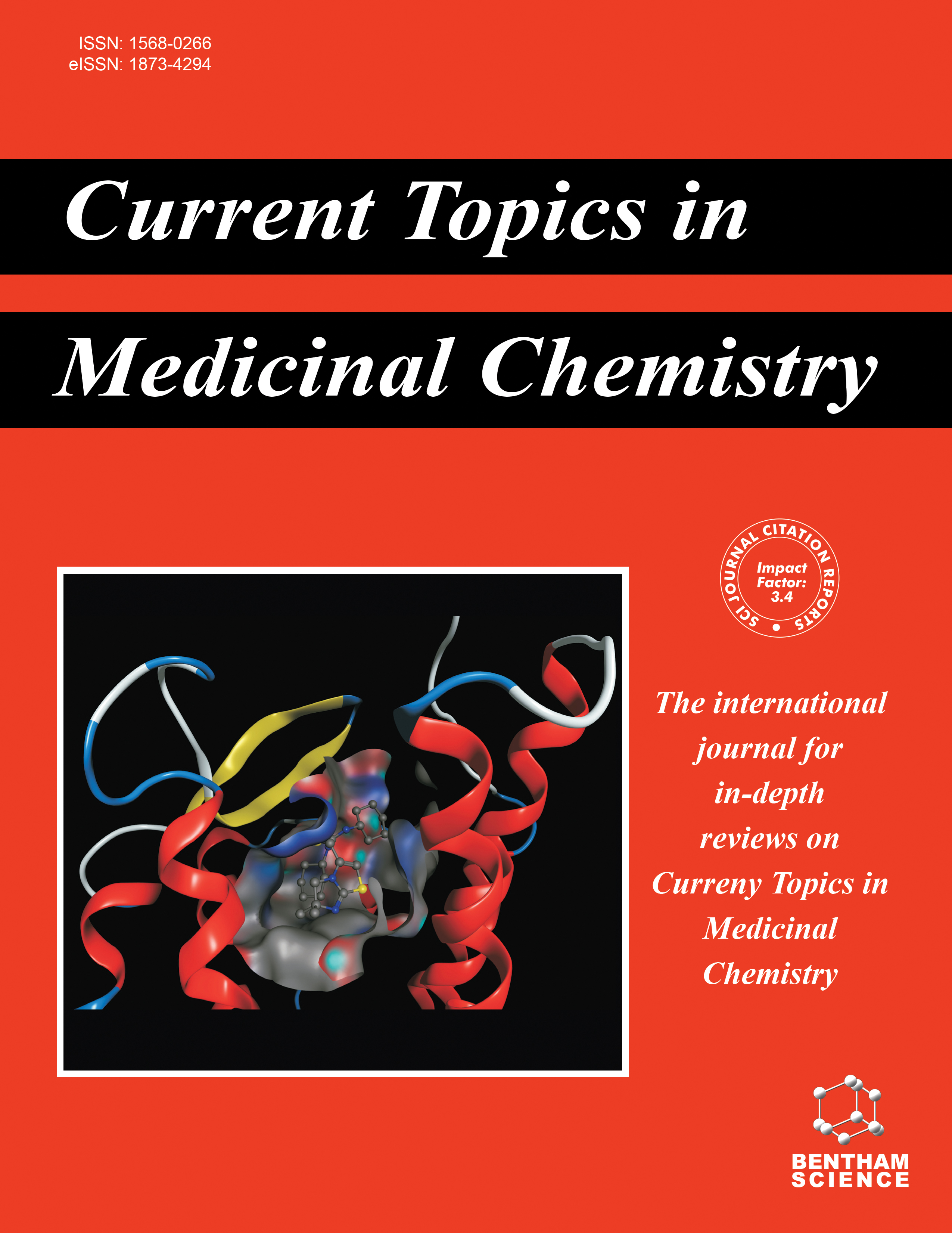- Home
- A-Z Publications
- Current Topics in Medicinal Chemistry
- Previous Issues
- Volume 22, Issue 32, 2022
Current Topics in Medicinal Chemistry - Volume 22, Issue 32, 2022
Volume 22, Issue 32, 2022
-
-
Co-administration of Pterocarpus marsupium Extract and Glibenclamide Exhibits Better Effects in Regulating Hyperglycemia and Associated Changes in Alloxan-induced Diabetic Mice
More LessAuthors: Neha Sharma, Anand Kar, Sunanda Panda and Dhananjay YadavBackground: Diabetes mellitus (DM) is a well-known global metabolic disorder. For its treatment, glibenclamide (GLB) is very often prescribed. However, herbal drugs are considered effective and better alternatives due to their low risk of side effects. This study was conducted to determine the combined effects of GLB and Pterocarpus marsupium (PM, a commonly available Indian herb) extract for the effective and safe trea Read More
-
-
-
Review on the Developments of Benzothiazole-containing Antimicrobial Agents
More LessThe infectious diseases caused by bacterial resistance to antibiotics constitute an increasing threat to human health on a global scale. An increasing number of infections, including tuberculosis, pneumonia, salmonellosis and gonorrhea, are becoming progressively challenging to cure owing to the ineffectiveness of current clinically used antibiotics and presents a serious health threat worldwide in medical community. The major con Read More
-
-
-
Repurposing of Chemotherapeutics to Combat COVID-19
More LessAuthors: Sisir Nandi, Bhabani S. Nayak, Mayank Kumar Khede and Anil Kumar SaxenaSevere acute respiratory syndrome corona virus 2 (SARS-CoV-2) is a novel strain of SARS coronavirus. The COVID-19 disease caused by this virus was declared a pandemic by the World Health Organization (WHO). SARS-CoV-2 mainly spreads through droplets sprayed by coughs or sneezes of the infected to a healthy person within the vicinity of 6 feet. It also spreads through asymptomatic carriers and has negative impact on t Read More
-
-
-
Synthesis and Antimycobacterial Activity of Isoniazid Derivatives Tethered with Aliphatic Amines
More LessAuthors: Václav Pflégr, Jiřina Stolaříková, Jarmila Vinšová and Martin KrátkýBackground: There is an urgent need for new antitubercular compounds. Modification of antimycobacterial isonicotinohydrazide at hydrazide N2 provided antimycobacterial active compounds. Objective: Combining this scaffold with various aliphatic amines that are also frequently present in antitubercular compounds, we have designed, synthesized, and evaluated twenty-three N- (cyclo)alkyl-2-(2-isonicotinoylhydrazineylidene Read More
-
Volumes & issues
-
Volume 25 (2025)
-
Volume 24 (2024)
-
Volume 23 (2023)
-
Volume 22 (2022)
-
Volume 21 (2021)
-
Volume 20 (2020)
-
Volume 19 (2019)
-
Volume 18 (2018)
-
Volume 17 (2017)
-
Volume 16 (2016)
-
Volume 15 (2015)
-
Volume 14 (2014)
-
Volume 13 (2013)
-
Volume 12 (2012)
-
Volume 11 (2011)
-
Volume 10 (2010)
-
Volume 9 (2009)
-
Volume 8 (2008)
-
Volume 7 (2007)
-
Volume 6 (2006)
-
Volume 5 (2005)
-
Volume 4 (2004)
-
Volume 3 (2003)
-
Volume 2 (2002)
-
Volume 1 (2001)
Most Read This Month
Article
content/journals/ctmc
Journal
10
5
false
en


